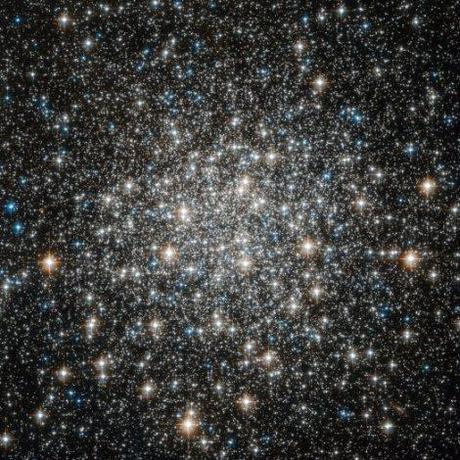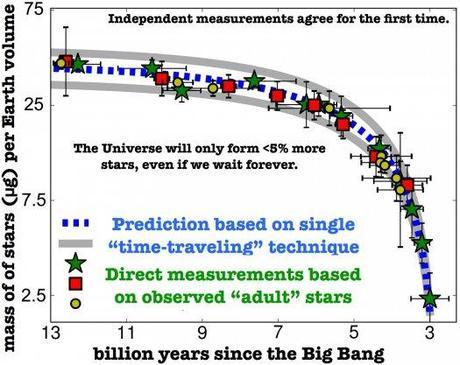
In its youth, the universe was a roiling soup of star ingredients, with new stars forming rapidly. But now it’s much quieter, and things are not expected to get more exciting anytime soon, astronomers say. For the first time, astronomers have figured out the universe’s star-birth rate, and found that today, it’s 30 times lower than its likely peak some 11 billion years ago. As a result, all of the future stars may be no more than a 5 percent increase above what we’ve got now.
Astronomers figured this out by taking snapshots of the universe at 2, 4, 6 and 9 billion years of age. (It’s 13.7 billion years old now.) The results show a clear decline in star-forming activity. A team led by David Sobral at Leiden Observatory studied the universe’s hydrogen-alpha emission line, which is a reliable indicator of star formation. They used Japan’s Subaru Telescope and the United Kingdom Infrared Telescope (UKIRT) on Mauna Kea in Hawaii, and the Very Large Telescope in Chile, covering a huge portion of the sky.
The team’s observing area encompassed the largest sky samples ever, more than 10 times larger than any previous samples. Observing the cosmos at different ages–so at different distances–with the same observational technique provides an apples-to-apples comparison.
It turns out that half the stars in existence now formed more than 9 billion years ago, and it took just 2 billion years to form all of them. The other half took almost five times as long to produce. If this trend continues, the universe will only get 5 percent more stars, even if we wait forever, the scientists say.
“We are clearly living in a universe dominated by old stars. All of the action in the universe occurred billions of years ago,” Sobral said in a statement.
Better go enjoy them while we still can.

[NAOJ]

